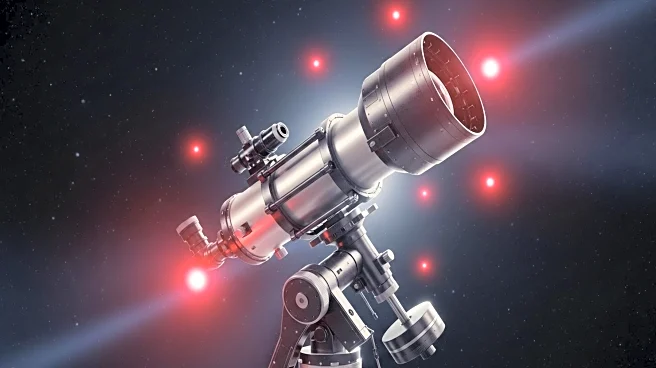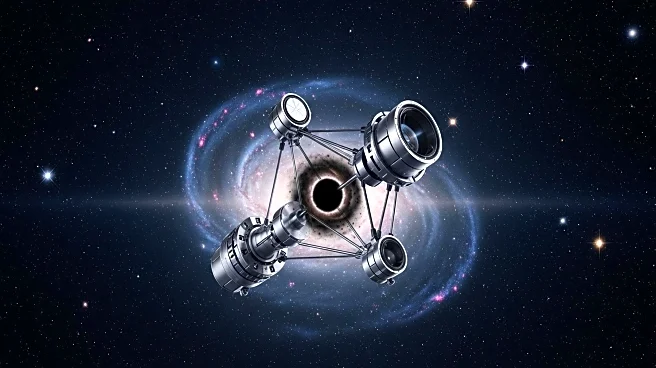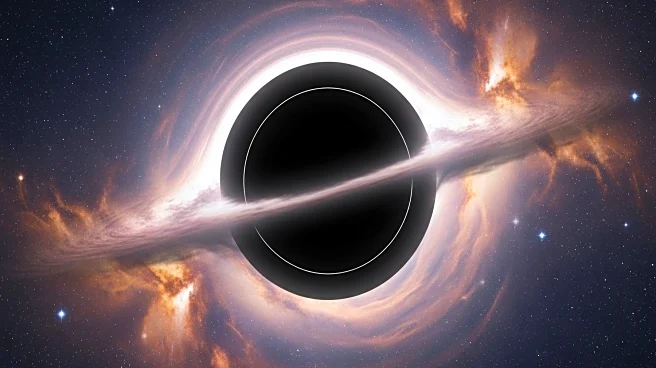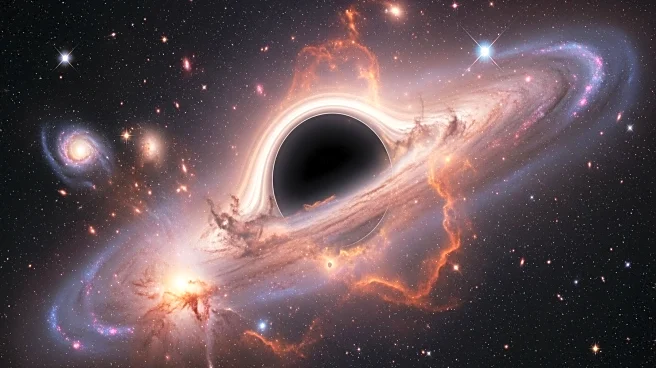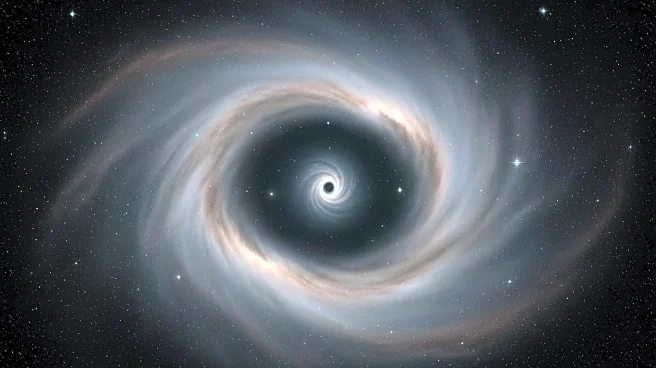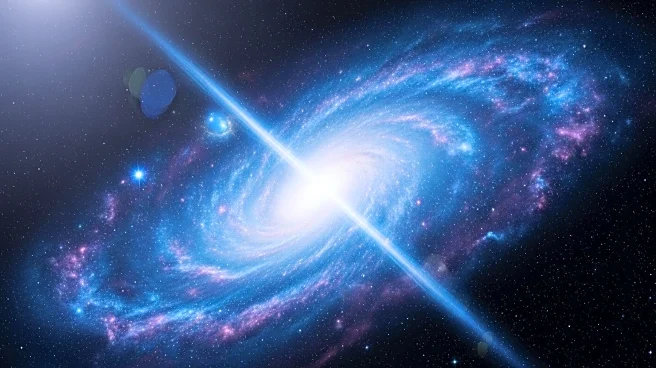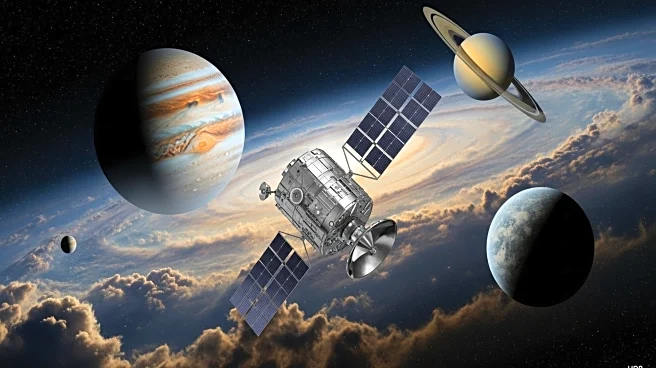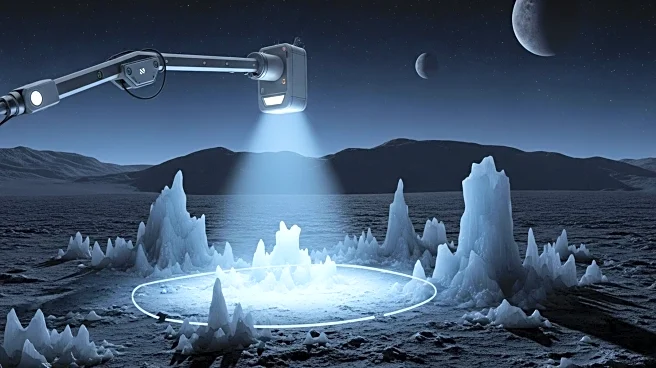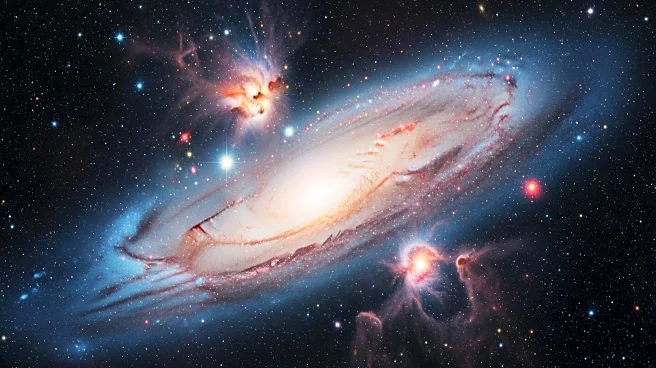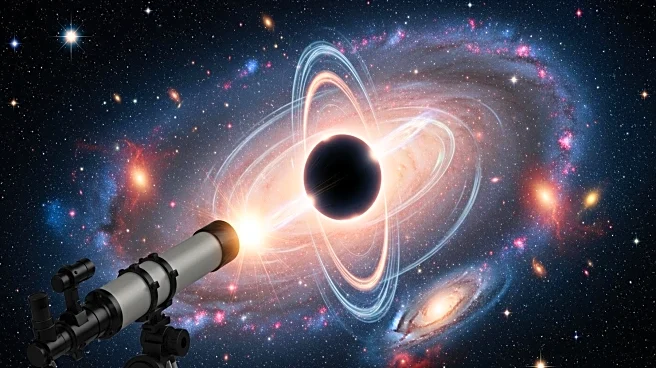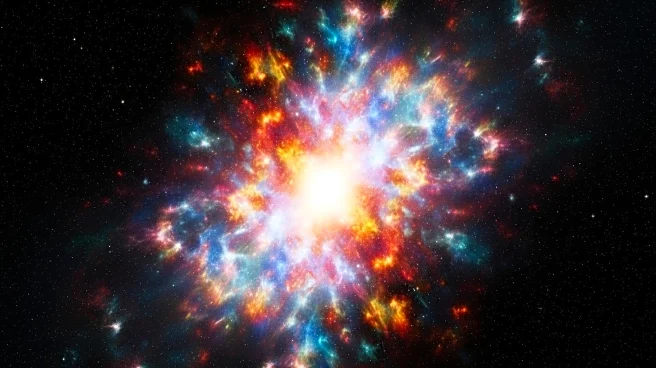What's Happening?
NASA's James Webb Space Telescope (JWST) has detected mysterious 'little red dots' in the universe, which may represent a new class of celestial objects. Initially thought to be mature galaxies, these objects are now suggested to be 'black hole stars'—giant spheres of hot gas powered by supermassive black holes. The discovery challenges existing models of galaxy formation, as these objects appear far more massive than expected for their age. The findings were published in the journal Astronomy & Astrophysics, with contributions from an international team of scientists, including those from Penn State.
Why It's Important?
The identification of these 'little red dots' as potential 'black hole stars' could revolutionize our understanding of galaxy formation and the early universe. If confirmed, these objects may represent an early phase in the development of supermassive black holes, providing insights into the processes that lead to their formation. This discovery could also impact theories about the evolution of galaxies and the conditions necessary for their development, offering a new perspective on the universe's history.
What's Next?
Further research is needed to confirm the nature of these 'little red dots' and their role in the universe. Scientists will continue to analyze data from JWST and other telescopes to better understand these objects and their implications for galaxy formation theories. Future studies may focus on the density and strength of these early black hole stars, potentially leading to new models of cosmic evolution.
